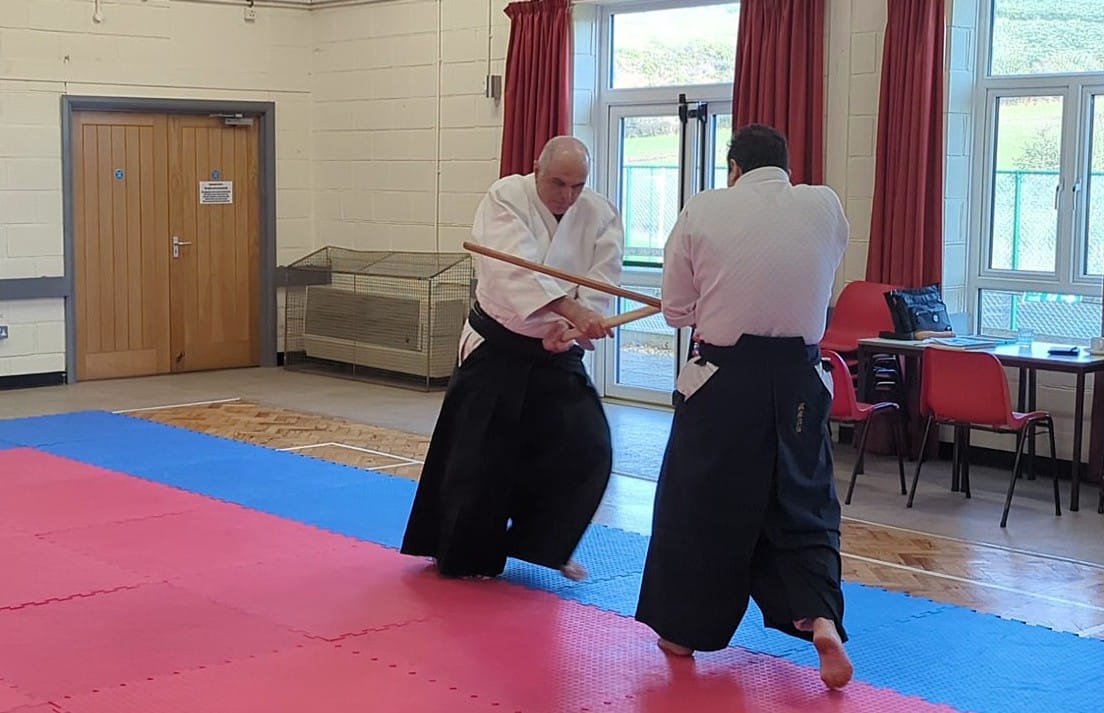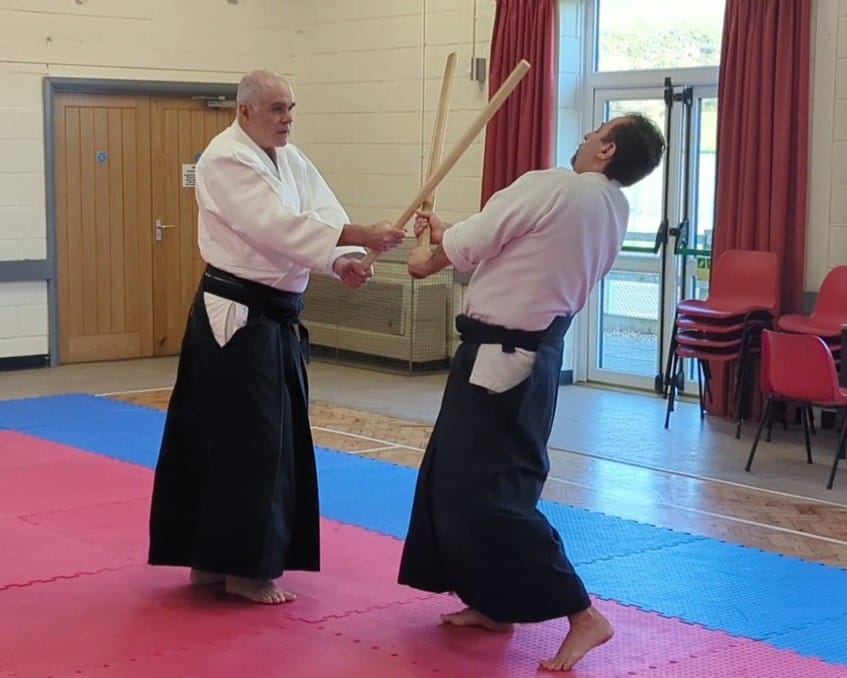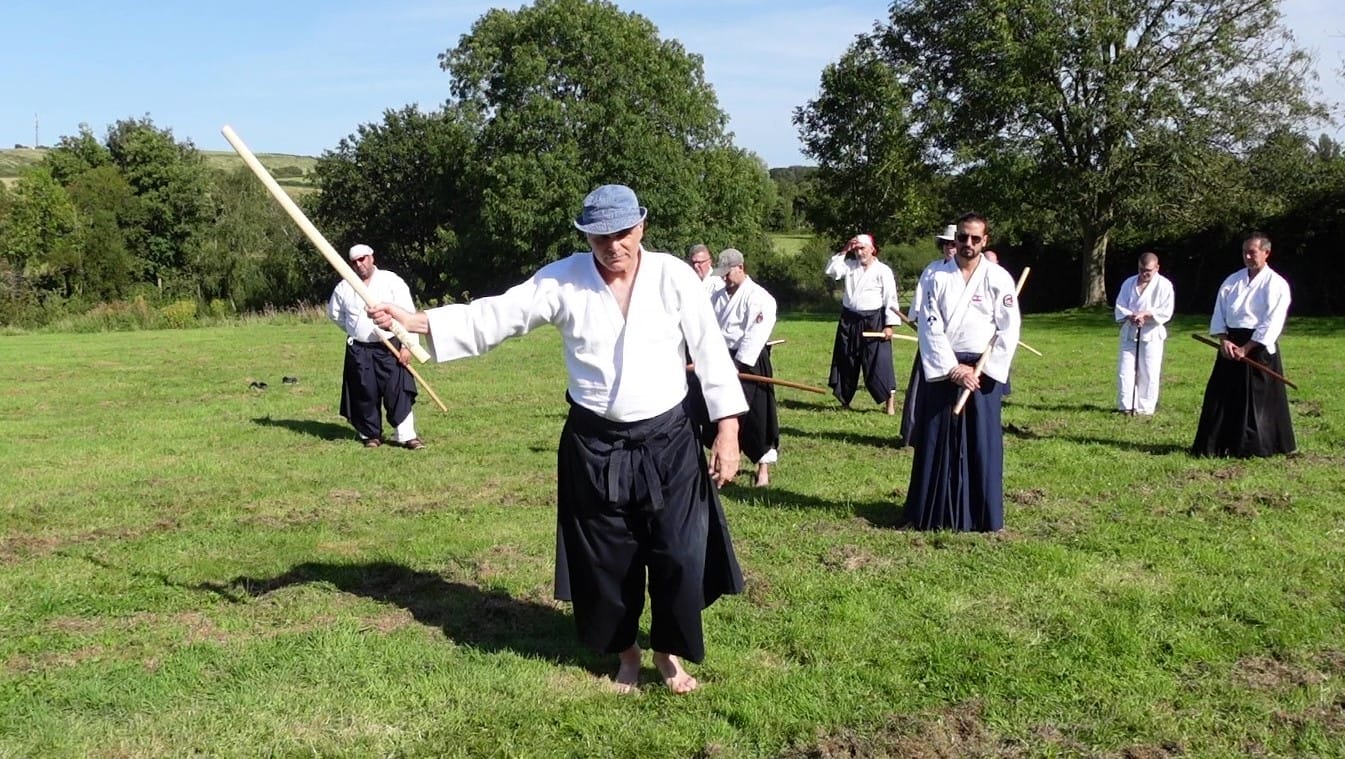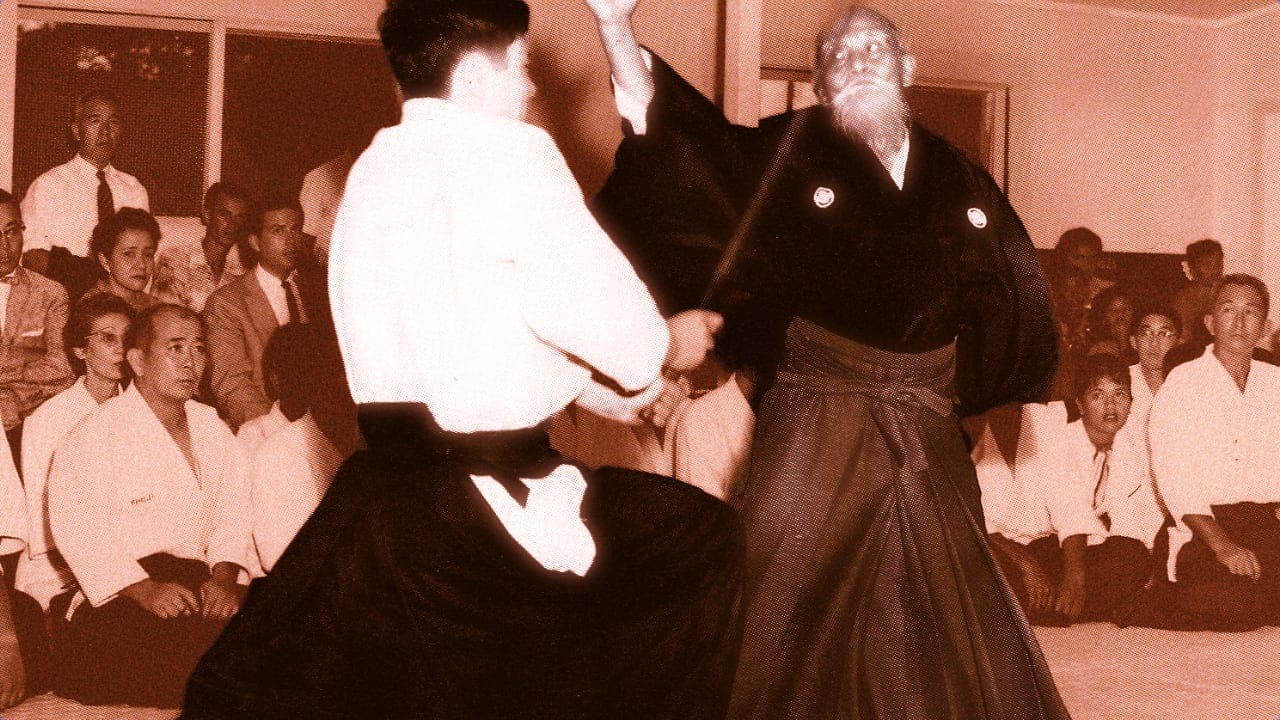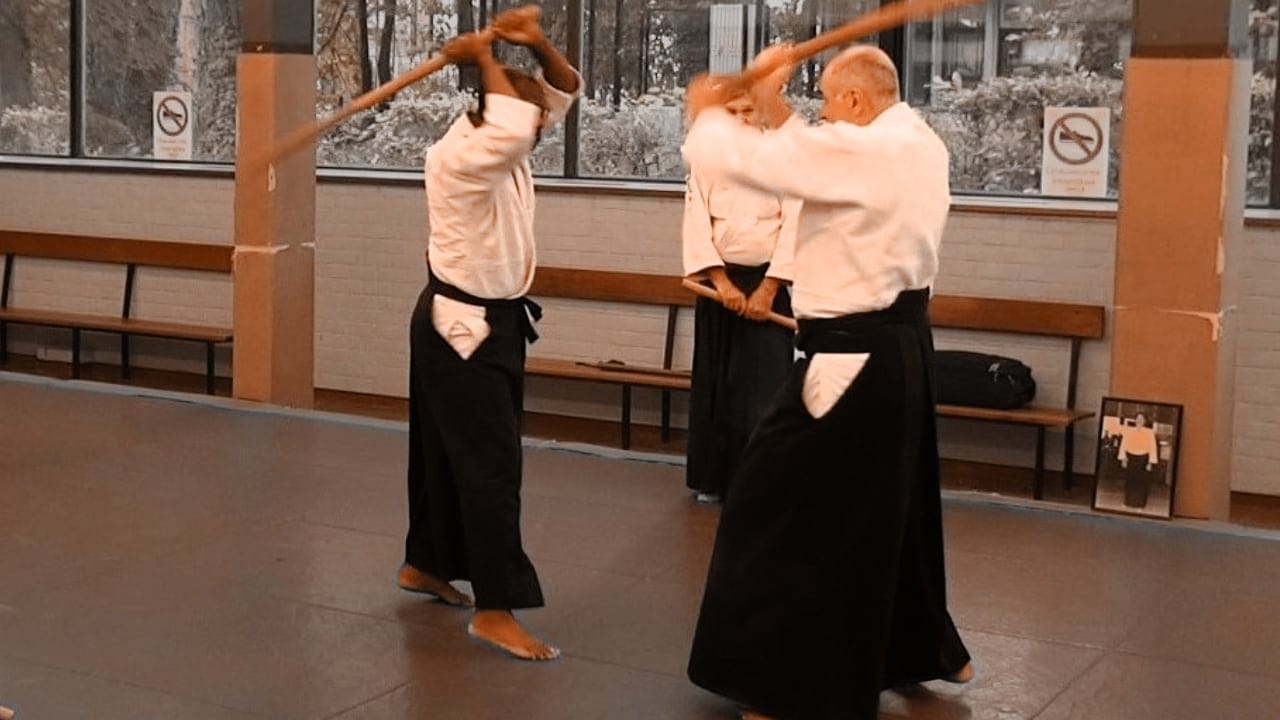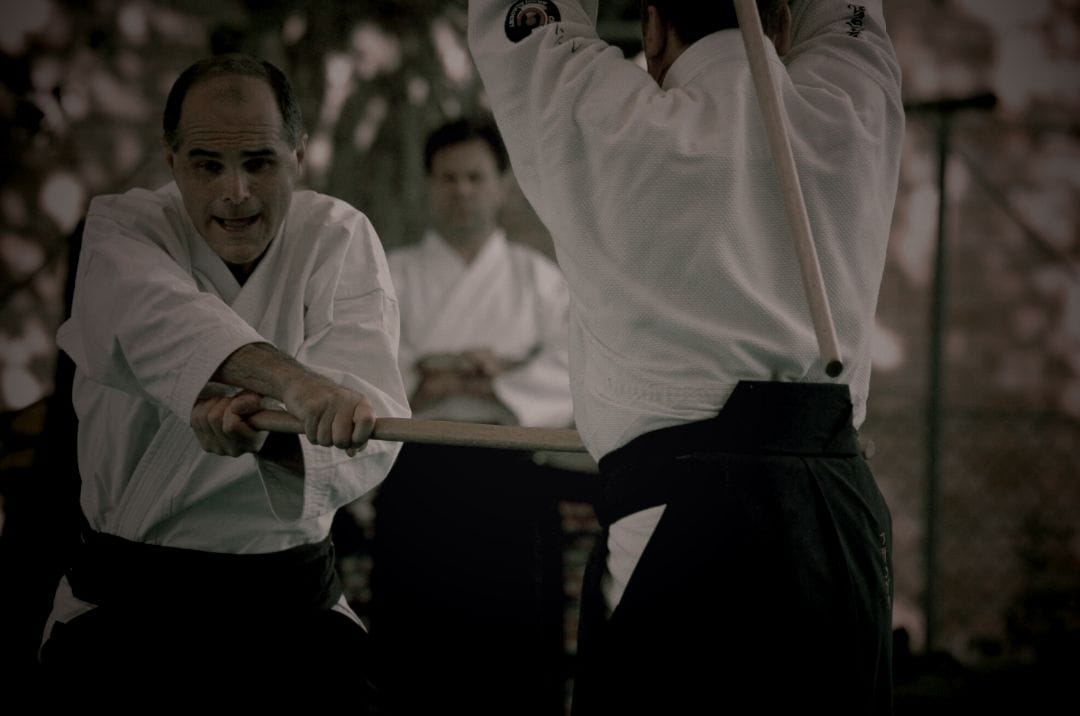We saw the first of the two basic Aiki ken exercises in the previous file, so here is the second: shichi no awase.
This is the exercise shown in the video:
This exercise is the application of the two previous suburis: yokomen uchi and shomen uchi, but this time tsuki is added.
Please note: go no awase starts in the migi hanmi position, but shichi no awase starts in the hidari hanmi position (guard with left foot in front)
Uchi tachi attacks with yokomen uchi, he moves forward (at a slight angle)
Uke tachi receives the yokomen attack with shomen uchi, he moves back (at a slight angle)
Uchi tachi attacks with tsuki, he moves forward (at a slight angle).
Uke tachi receives the tsuki attack with tsuki, he moves back (at a slight angle).
Shichi no awase thus incorporates the three strikes of the Japanese sword in a single exercise.
What was said in the previous article to explain the interest of the exercise is equally valid here, and can be repeated in summary form:
- In the reality of Aiki, uke tachi never retreats, he does irimi-tenkan,
- The shichi no awase exercise forces him to retreat because this pedagogical exercise is designed to train him to truly cut on a moving target (the target in this case is uchi tachi's sword).
Be careful, however: the mind must not be concerned with uchi tachi's sword, otherwise he will fight against this sword (parry, counter, block, deflect, etc.). The mind must be directed towards the man holding the sword, he is the target, he is the one who must receive the strike from uke tachi. However, the artificial distance created by uke tachi's backward movement causes the uchi tachi's sword to receive the strike instead of his body. But uke tachi's sword ‘ignores’ this, so to speak, and must strike in its front as if it were striking uchi tachi himself. Only in this way can uke tachi take the opponent's cut... for he does not even think about it. This is true for uke tachi's tsuki as well as for his shomen.
If there were no shichi no awase as it is conceived, if one entered directly with irimi-tenkan on the uchi tachi attack - as Aiki really requires - then the moving target would be the real target, that is to say uchi tachi's body, and it would not be possible to strike truly, making it impossible to practise cutting or stabbing.
I will now repeat my conclusion from the previous file, as this is an essential point for the understanding of Aikido training:
Shichi no awase is not yet Takemusu Aiki, it is a preparatory exercise on the path to Takemusu Aiki. It is a necessary compromise in learning, and it should not be thought that the Aiki principle is respected in this exercise. The Aiki principle of irimi-tenkan is put in brackets as long as is necessary to acquire a good cutting and stabbing technique, we are in the study, in the method, in Aiki-do. It is essential to make the distinction between the learning method and the reality of Takemusu Aiki. Aiki-do is not Aiki; the whole of Aiki-do is in reality only an ingenious learning method whose aim is to achieve Aiki.

